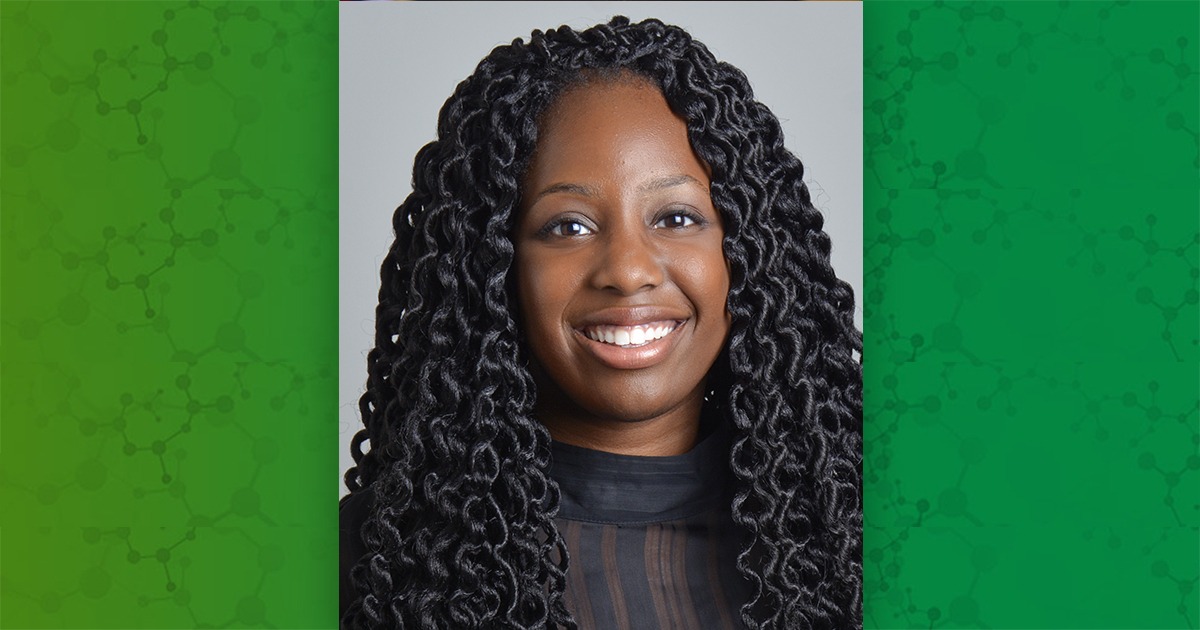Sherice Simpson’s medical school career trajectory followed a typical course — typical in that it did not include a research component.
“I wanted to go into pediatric surgery,” Simpson recalled. But after taking a year to pursue research at NIEHS, that all changed. “NIEHS showed me that I wanted to be a clinician-scientist,” she said.
Simpson, a medical student at the Jacobs School of Medicine and Biomedical Sciences at the University at Buffalo, came to NIEHS as a participant in the National Institutes of Health (NIH) Medical Research Scholars Program (MRSP). MRSP is a year-long research fellowship for medical, dental, and veterinary students between their third and fourth years of medical school.
The draw of NIEHS for Simpson was the opportunity to work with Donna Baird, Ph.D., a reproductive epidemiologist and head of the NIEHS Women’s Health Group. In addition to adding a research component to her medical portfolio, Simpson said working with Baird also helped her rethink her career objectives.
“Donna is a great teacher and a great mentor,” Simpson said. “I realized that I wanted to go into OB-GYN and public health with a research focus on reproductive epidemiology and health disparities affecting Black women’s health.”
Baird’s SELF project
 Baird said Simpson could combine clinical care with epidemiological research in her future medical career. (Photo courtesy of Steve McCaw / NIEHS)
Baird said Simpson could combine clinical care with epidemiological research in her future medical career. (Photo courtesy of Steve McCaw / NIEHS)Simpson’s main task over the year was working on the Study of Environment, Lifestyle and Fibroids (SELF) project, an ongoing study led by Baird looking at uterine fibroids in a population of African American women in Detroit. Simpson focused on correlates of infertility within the cohort of SELF participants.
NIEHS Clinical Director Janet Hall, M.D., who has been active in candidate selection for MRSP, pointed out that Baird’s work in Detroit is unique for its longevity and focus.
“Donna is finding out things about a disease that disproportionately affects African American women,” Hall said. “When she established the longitudinal SELF study, she was really ahead of the curve in research relating to disparities in women’s reproductive health.”
This camaraderie and sense of shared purpose meant a lot to Simpson and helped change her view of what was possible in research.
“SELF, with all of those women in Baird’s lab, created an extremely supportive environment,” Simpson said.
First MRSP fellow at NIEHS
MRSP has welcomed more than 500 students over its 10 years, but for a variety of reasons, Simpson is the first to pursue her MRSP year at NIEHS. The goal of MRSP is to inspire medical students to pursue careers in biomedical research, but the program was not originally set up for students to work outside of the NIH main campus in Bethesda, according to Hall.
 “Sherice was fantastic,” Hall said, “We also have amazing people at NIEHS as mentors.” (Photo courtesy of Steve McCaw / NIEHS)
“Sherice was fantastic,” Hall said, “We also have amazing people at NIEHS as mentors.” (Photo courtesy of Steve McCaw / NIEHS)Last year, Hall said, NIH wanted to expand the program to encourage more diversity and to incentivize people to work with mentors on other campuses, including NIEHS.
The program gave Simpson the opportunity to give a presentation on her work at a three-day meeting of the national MRSP program. Hall believes Simpson will benefit from her experience in other ways as well.
“When Sherice goes for residency interviews, she’ll have experience not everybody brings to the table,” Hall said. “Competitive residency programs get so many applications, and this will help her to stand out.”
(John Yewell is a contract writer for the NIEHS Office of Communications and Public Liaison.)
Source link
factor.niehs.nih.gov

